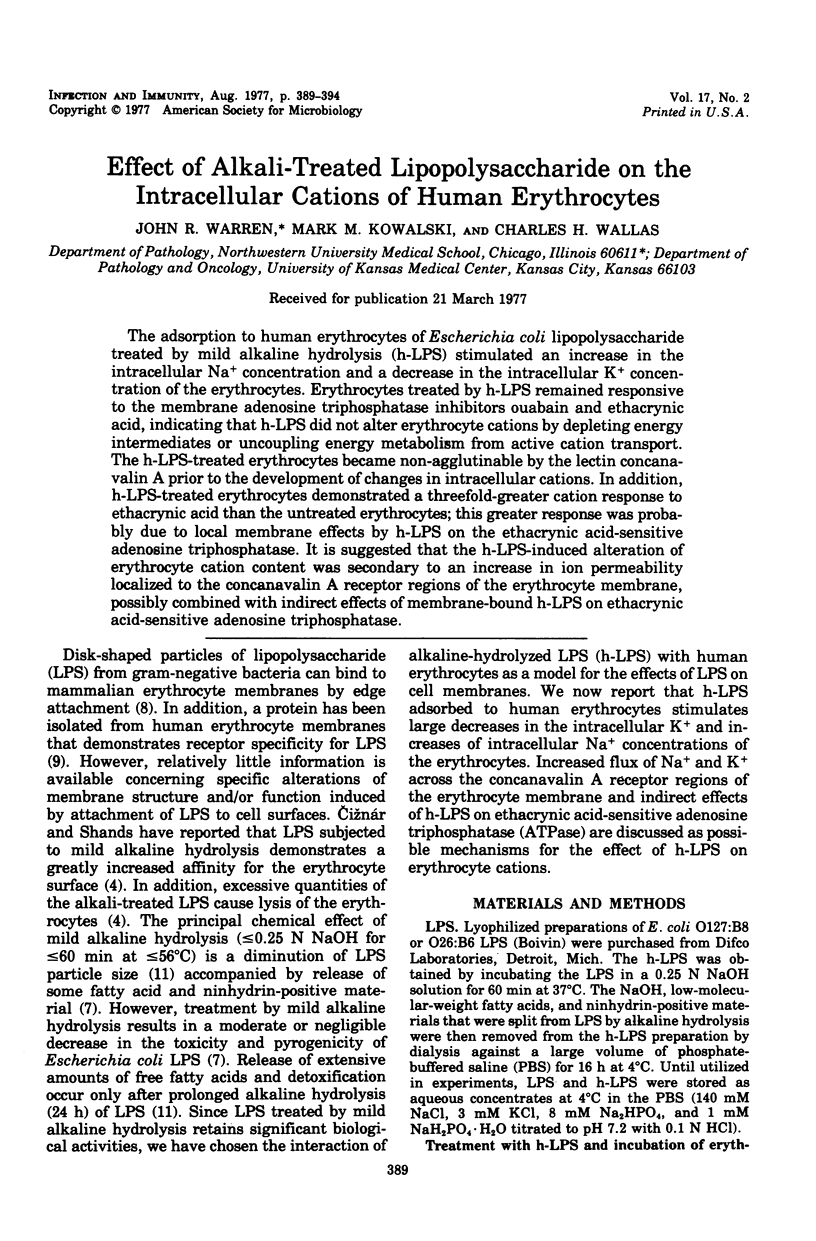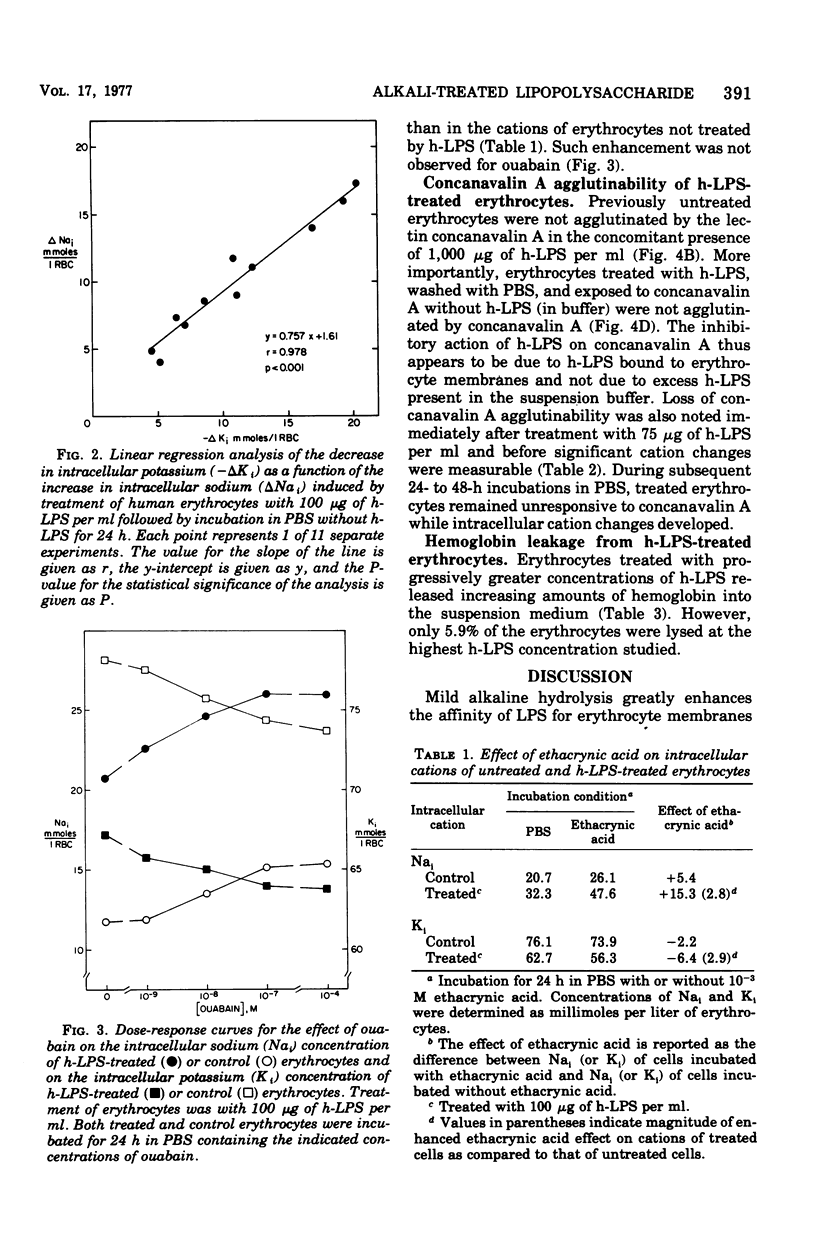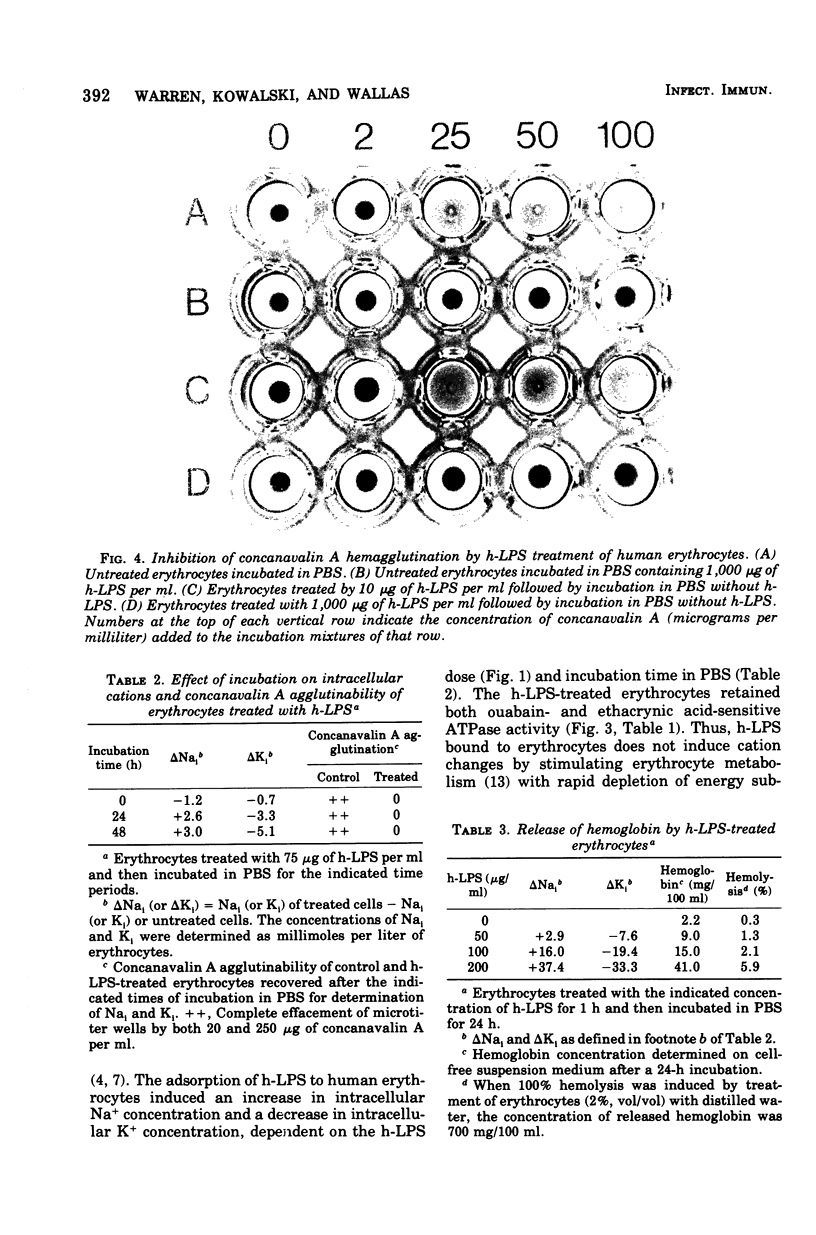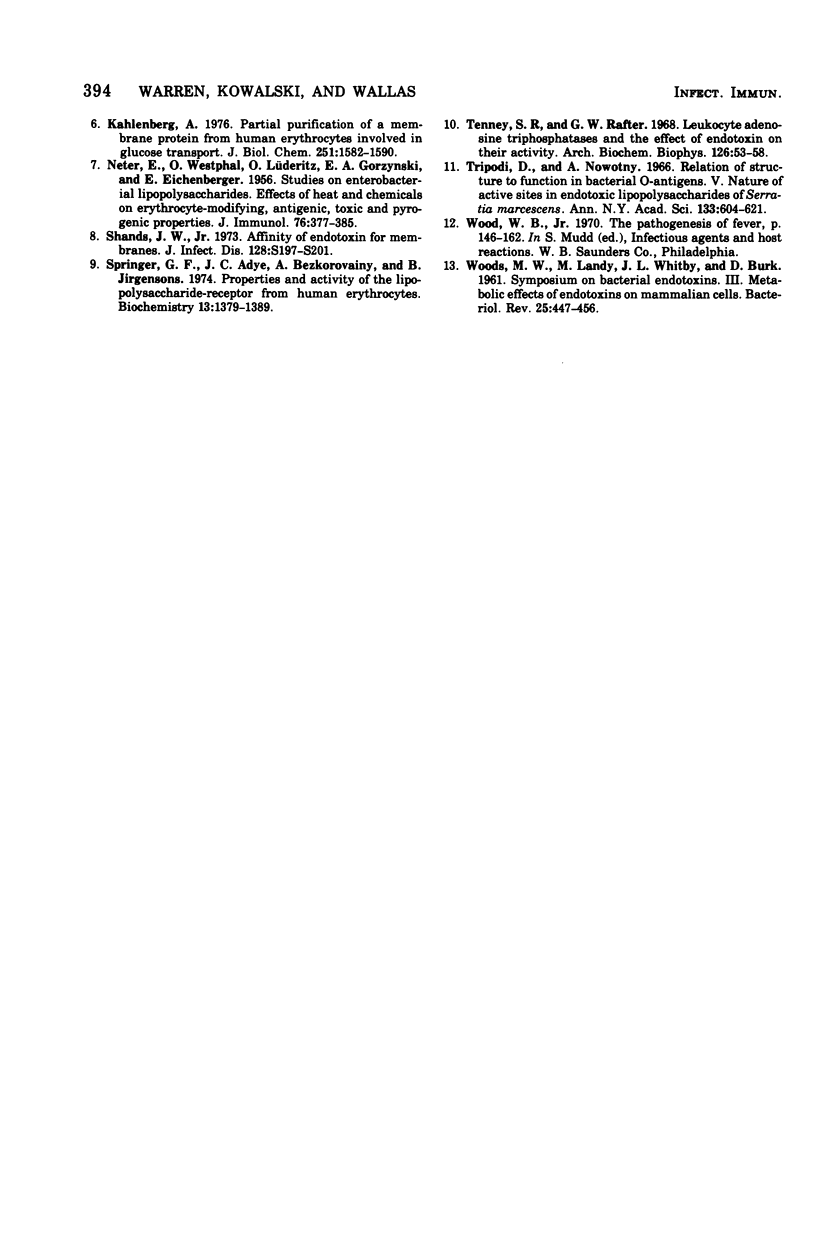Abstract
The adsorption to human erythrocytes of Escherichia coli lipopolysaccharide treated by mild alkaline hydrolysis (h-LPS) stimulated an increase in the intracellular Na+ concentration and a decrease in the intracellular K+ concentration of the erythrocytes. Erythrocytes treated by h-LPS remained responsive to the membrane adenosine triphosphatase inhibitors ouabain and ethacrynic acid, indicating that hLPS did not alter erythrocyte cations be depleting energy intermediates or uncoupling energy metabolism from active cation transport. The h-LPS-treated erythrocytes became non-agglutinable by the lectin concanavalin A prior to the development of changes in intracellular cations. In addition, h-LPS-treated erythrocytes demonstrated a three-fold greater cation response to ethacrynic acid than the untreated erythrocytes; this greater response was probably due to local membrane effects by h-LPS on the ethacrynic acid-sensitive adenosine triphosphatase. It is suggested that the h-LPS-induced alteration of erythrocyte cation content was secondary to an increase in ion permeability localized to the concanavalin A receptor regions of the erythrocyte membrane, possibly combined with indirect effects of membrane-bound h-LPS on ethacrynic acid-sensitive adenosine triphosphatase.
Full text
PDF





Images in this article
Selected References
These references are in PubMed. This may not be the complete list of references from this article.
- Averdunk R. Early changes of 'leak flux' and the cation content of lymphocytes by concanavalin A. Biochem Biophys Res Commun. 1976 May 3;70(1):101–109. doi: 10.1016/0006-291x(76)91114-1. [DOI] [PubMed] [Google Scholar]
- Cabantchik Z. I., Rothstein A. Membrane proteins related to anion permeability of human red blood cells. I. Localization of disulfonic stilbene binding sites in proteins involved in permeation. J Membr Biol. 1974;15(3):207–226. doi: 10.1007/BF01870088. [DOI] [PubMed] [Google Scholar]
- Ciznár I., Shands J. W., Jr Effect of alkali-treated lipopolysaccharide on erythrocyte membrane stability. Infect Immun. 1971 Oct;4(4):362–367. doi: 10.1128/iai.4.4.362-367.1971. [DOI] [PMC free article] [PubMed] [Google Scholar]
- Findlay J. B. The receptor proteins for concanavalin A and Lens culinaris phytohemagglutinin in the membrane of the human erythrocyte. J Biol Chem. 1974 Jul 25;249(14):4398–4403. [PubMed] [Google Scholar]
- Kahlenberg A. Partial puridication of a membrane protein from human erythrocytes involved in glucose transport. J Biol Chem. 1976 Mar 25;251(6):1582–1590. [PubMed] [Google Scholar]
- NETER E., WESTPHAL O., LUDERITZ O., GORZYNSKI E. A., EICHENBERGER E. Studies of enterobacterial lipopolysaccharides; effects of heat and chemicals on erythrocyte-modifying, antigenic, toxic and pyrogenic properties. J Immunol. 1956 May;76(5):377–385. [PubMed] [Google Scholar]
- Springer G. F., Adye J. C., Bezkorovainy A., Jirgensons B. Properties and activity of the lipopolysaccharide-receptor from human erythrocytes. Biochemistry. 1974 Mar 26;13(7):1379–1389. doi: 10.1021/bi00704a011. [DOI] [PubMed] [Google Scholar]
- Tenney S. R., Rafter G. W. Leukocyte adenosine triphosphatases and the effect of endotoxin on their activity. Arch Biochem Biophys. 1968 Jul;126(1):53–58. doi: 10.1016/0003-9861(68)90558-4. [DOI] [PubMed] [Google Scholar]
- Tripodi D., Nowotny A. Relation of structure to function in bacterial O-antigens. V. Nature of active sites in endotoxic lipopolysaccharides of Serratia marcescens. Ann N Y Acad Sci. 1966 Jun 30;133(2):604–621. doi: 10.1111/j.1749-6632.1966.tb52392.x. [DOI] [PubMed] [Google Scholar]
- WOODS M. W., LANDY M., WHITBY J. L., BURK D. Symposium on bacterial endotoxins. III. Metabolic effects of endotoxins on mammalian cells. Bacteriol Rev. 1961 Dec;25:447–456. doi: 10.1128/br.25.4.447-456.1961. [DOI] [PMC free article] [PubMed] [Google Scholar]



